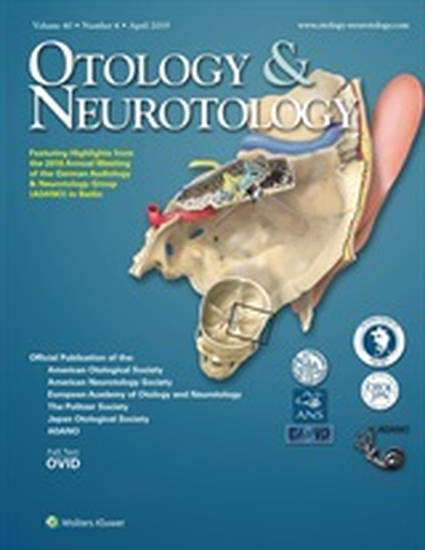
Article
Cochlear Implant Associated Labyrinthitis: A Previously Unrecognized Phenomenon With a Distinct Clinical and Electrophysiological Impedance Pattern
Otology & Neurotology
(2017)
Abstract
Objectives: To report a unique clinical entity “cochlear implant associated labyrinthitis,” characterized by a distinct constellation of clinical symptoms and pattern of electrode impedance fluctuations.
Study Design: Retrospective chart review.
Methods: All patients that underwent cochlear implantation between January 2014 and December 2016 were retrospectively reviewed. All subjects with acute onset dizziness, device performance decline, and characteristic erratic pattern of electrode impedances occurring after an asymptotic postoperative interval were identified and reported.
Results: Five patients with the above criteria were identified, representing 1.4% of all implant surgeries performed during this time. The median age at time of implantation was 71 years, and the median time interval between implantation and onset of symptoms was 126 days. All patients exhibited acute onset dizziness, subjective performance deterioration, erratic impedance pattern, and two experienced worsening tinnitus. Two of five patients underwent subsequent CT imaging, where good electrode placement was confirmed without cochlear ossification. Two of five patients received oral prednisone therapy. All patients reported a subjective improvement in symptoms and stabilization of electrode impedances. Three patients subsequently received vestibular testing, where significantly reduced peripheral vestibular function was identified.
Conclusions: We describe a unique clinical entity, “cochlear implant associated labyrinthitis,” characterized by a distinct constellation of clinical symptoms and corresponding electrode impedance anomalies. The exact cause for this event remains unknown, but may be related to viral illness, delayed foreign body reaction to the electrode, or a reaction to electrical stimulation. Future studies characterizing this unique clinical entity are needed to further elucidate cause and optimal management.
Keywords
- Cochlear implant,
- Impedance,
- Labyrinthitis
Disciplines
Publication Date
December 1, 2017
DOI
10.1097/MAO.0000000000001615
Publisher Statement
Copyright 2019 Otology & Neurotology, Inc.
Citation Information
Itayem, D.A., Sladen, D., Driscoll, C.L., Neff, B.A., Beatty, C.W., Carlson, M.L. (2017). Cochlear implant associated labyrinthitis: A previously unrecognized phenomenon with a distinct clinical and electrophysiological impedance pattern. Otology & Neurotology, 38(10): e445-e450. doi: 10.1097/MAO.0000000000001615.
